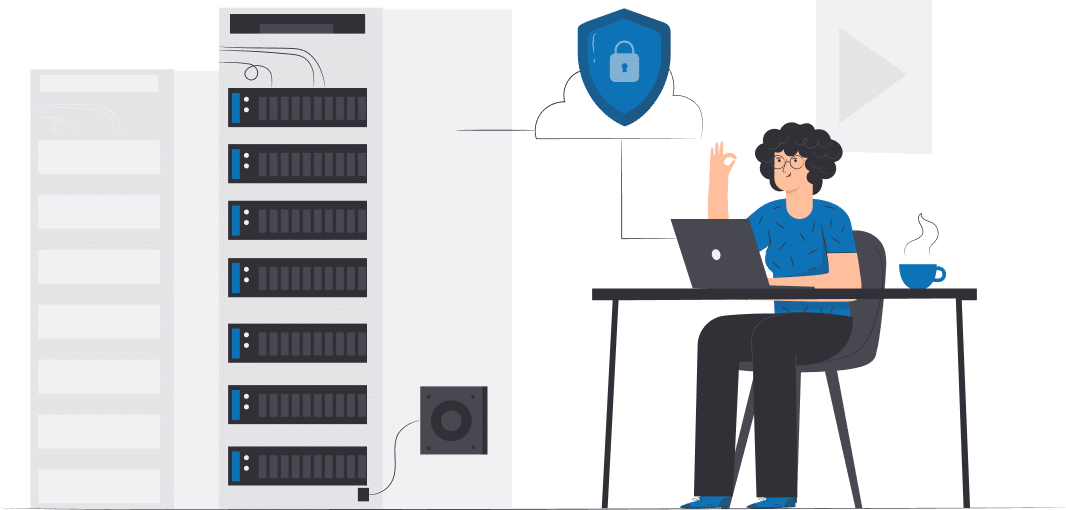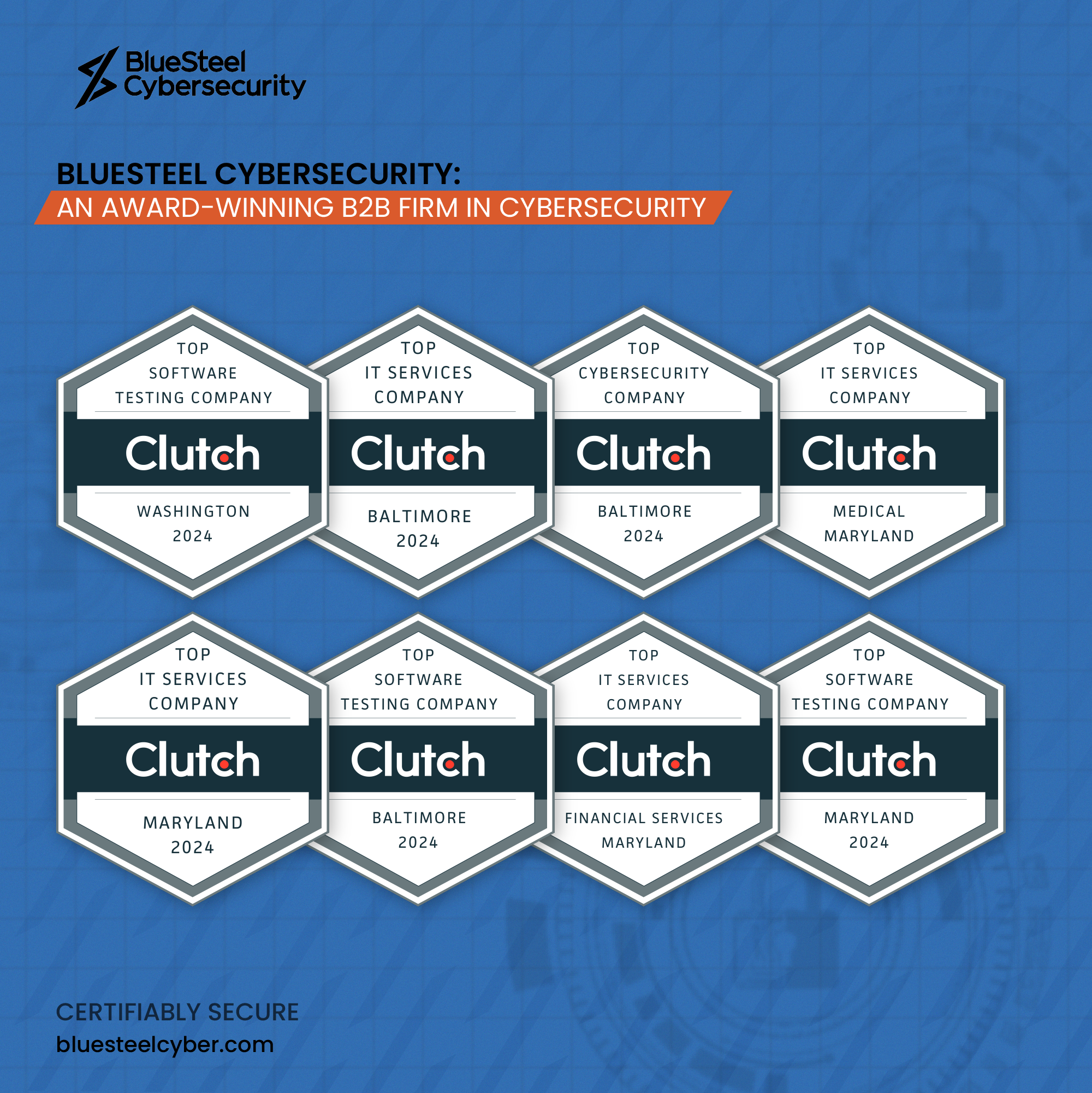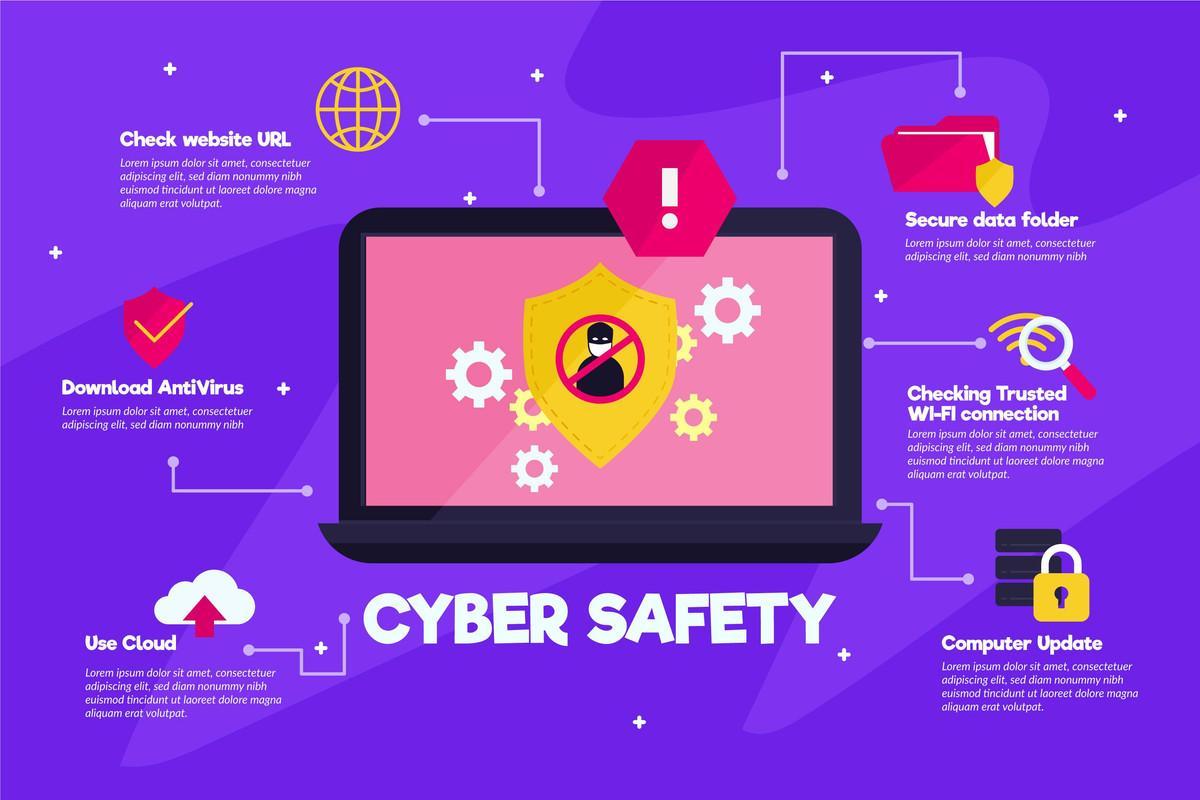Many finance organizations are making cybersecurity their priority in order to avoid financial losses, a bad reputation, and legal issues that come with a cybersecurity breach. This is where financial services cybersecurity compliance comes into play. They’re seeking a deeper understanding of how to effectively implement regulations and increase compliance, which will help keep sensitive data away from criminals.
This guide dives deep into cybersecurity compliance for financial services companies and shows industry enthusiasts how to successfully meet set guidelines to protect their systems and customers.
The guide will cover:
- Various regulations that apply to the finance industry
- Ways to assess and manage cybersecurity threats
- Best practices for financial services organizations
After understanding the above information, financial service organizations will be better equipped to offer data protection, remain compliant, and provide customers with a secure digital service.
What is Financial Services Cybersecurity Compliance?
Banks, credit unions, and government services are some of the examples of institutions in finance that must strictly follow data and cybersecurity laws. That is to say, they must offer financial services that are cybersecurity compliant.
Staying compliant with cybersecurity laws includes ensuring data integrity within the organization, creating awareness about data security, training staff, and assessing and managing various security risks.
Some of the laws that keep data safe in finance include:
- The European General Data Protection Regulation (EU-GDPR) which protects personal data from compromise.
- The Sarbanes-Oxley Act (SOX), which the US Congress designed to protect investors from financial theft.
- Payment Card Industry Data Security Standards (PCI DSS) to reduce card fraud and protect card holders.
- Bank Secrecy Act (BSA) to prevent money laundering.
- Gramm-Leach-Bliley Act to ensure financial institutions disclose to their customers data-sharing practices and protect all customer information.
- Payment Service Directive 2 (PSD 2) supports competition in the banking sector, regulates online payments, and enhances data security and authentication.
Why Financial Services Cybersecurity Compliance is So Important?
Cybersecurity compliance helps reduce financial losses, which are often centered around data breaches and can impact customer trust and loyalty. With proper cybersecurity compliance, financial institutions can strengthen data protection and boost customer trust. Proper compliance also lowers financial penalties and legal consequences.
In 2023, the costs associated with data breaches were about 5.9 million USD, down from 5.97 million USD. Even with the decline in these figures, companies still have to comply with cybersecurity regulations. New technologies like ransomware as a service, among others, are making it easier for bad actors to penetrate systems and access sensitive data like PII (Personal Identifiable Information). These attacks deny organizations access to data and important files, which is costly to remediate.
It is now the responsibility of financial institutions to make serious efforts in implementing the correct cybersecurity controls. They need to ensure these controls keep records safe and manage risks. For example, risks can be managed by following 23 NYCRR Part 500 — a regulation for financial services that was amended to enable organizations to protect themselves better.
Regulatory Environment
The finance landscape is rapidly changing with the advancement of technology like AI and robotics. Studies show that 85% of IT professionals in the banking industry already have a strategy to adopt AI and use it to develop their products and services.
With these changes, there has also been an increase in cyberattacks, which calls for effective strategies to keep the financial industry accountable. Therefore it is important to understand the regulatory environment, which includes the role of financial regulators and regulatory requirements.
The Role of Financial Regulators
There are laws that require financial regulators to implement rules and establish cybersecurity standards in institutions. These regulators are government agencies or independent organizations that ensure services meet specific standards. They also supervise financial services cybersecurity compliance.
However, some heavily regulated industries have standards that overlap each other, which can lead to double regulation that is wasteful, burdensome, and inefficient. Regulators, therefore, need to focus on mandatory regulations and avoid optional ones.
Regulators must:
- Oversee financial markets and ensure they are fair and stable
- Monitor institutions to prevent fraud
- Enforce laws on financial services and products
- Investigate violators and offer justice
- Protect investors and consumers from abuse, fraud, and misconduct
- Manage risks
Regulatory Requirements
Cybersecurity regulation requirements are security laws and rules that financial institutions must follow. These requirements include:
- Designating a qualified person to be responsible for implementing, enforcing, and overseeing an information security program
- Developing and providing a written assessment that shows the criteria for evaluating risks and assessing a company’s security
- A periodic review of customers’ access controls
- Managing the inventory data, systems, and personnel devices
- Encrypting all sensitive customer information that is in transit or at rest
- Ensuring in-house software development services and safe testing for externally developed software processes are safe
- Reinforcing security with multifactor authentication to ensure cybercriminals don’t log in and access sensitive information.
- Ensuring companies follow proper disposal procedures for digital items that process sensitive data like PHI
- Performing periodic risk assessments
- Performing vulnerability tests continuously to prevent bad actors from using loopholes in systems to access information
- Developing, implementing, and maintaining an incident response plan.
- Periodically, providing authorities or governing bodies, like a state or federal regulatory agency, with a report about the institution’s cybersecurity program.
Key Elements of an Effective Cybersecurity Program
An effective cybersecurity program must have key elements that ensure data in financial organizations is safe from cybercriminals and data breaches. This data can include PII, intellectual property, social security numbers, bank account numbers, and credit card numbers.
Criminals often target the storage of this sensitive data, or they try to intercept it while it is in transit. Therefore, it’s important to ensure your cybersecurity program can perform these functions well for optimal data protection.
Identifying and Assessing Risk Levels
Financial organizations use digital assets like computers that store and process different types of information because these devices offer a smooth customer experience and speed up processes. These devices, however, leave a company open to encountering risks online, such as hacking, viruses, or malware attacks, and organizations need to have the right controls to defend against such attacks.
The first step is to have a team in place that can identify, prioritize, and report the attacks to authorities. The risk assessment team should include:
- IT professionals who understand the organization’s network and digital infrastructure
- Executives who understand the flow of information in the organization
- Knowledge experts and resources that can help in identifying and assessing risk levels and performing the actions listed below:
Audit Checklist
To assess all systems in an organization, a checklist should be created. The audit checklist will ensure a cybersecurity team assesses all the complex and diverse networks in the financial institution. Using this checklist, a team will easily be able to identify any gaps at any level and detect and remove malware.
Mitigation
After assessing the systems, the next stage is to offer recommendations on how to fill the gaps. At this stage, the security team will explain in their reports the problems they discovered and possible solutions.
Calculating Risks
To calculate risks in an organization’s systems, a cybersecurity team uses a formula that includes the threats they discover and the consequences. For this formula to work well, they’ll need to also understand what a threat means and the different threat levels.
A threat is an event, which can be malware or ransomware, and this event affects the critical systems of an institution such as people, property or money.
Determine the Threat Level
An effective cybersecurity program determines the various threat levels in systems so the security team can recommend the correct remedial action.
Here are the various threat levels and what they mean:
Low or Green means there’s no alarming activity other than the usual concern for viruses or malicious activities like hacking requiring routine preventive measures.
Guarded or Blue indicates a general increase in hacking, viruses or any other suspicious activities with no significant impact.
Elevated or Yellow indicates hacking, viruses or other malicious activities showing increased risks that can cause significant damage or disruption to systems.
A high or Orange level indicates an increase in hacking, viruses, or other malicious activities that can compromise core infrastructure in a financial institution.
Severe or Red level indicates a higher risk of hacking, viruses, or other malicious activities causing widespread outages and destroying systems.
Vulnerability Assessment and Determining Effectiveness of Security Systems
A financial institution performs a vulnerability assessment to understand its weaknesses regarding protecting vital assets against cyberattacks. The risk assessment team performing the assessment needs to understand what the right physical security posture against common cyber threats should look like and this understanding will enable them to get the best results during the risk assessment and correctly understand the consequences of the threats.
These consequences explain the degree to which an incident of a cyber attack negatively impacts a financial institution and understanding them and their impact helps prioritize their solutions. For example, an increase in ransomware attacks means a financial organization will prioritize detecting and solving ransomware threats.
Creating Policies and Procedures
Cybersecurity policies and procedures establish guidelines about information security and often include password policies, acceptable use guides, access control and remote access control. Other policies include data management, breach response, and data recovery. The policies limit access to systems, maintain data integrity, and prevent expensive data breaches. They are in accordance with compliance standards like ISO, GDPR, and DSS and will do the following:
- Define a financial institution’s objectives, including digital assets and the scope of coverage of the cybersecurity policy
- Help conduct a thorough cybersecurity risk assessment and identify potential risks and the impact of the threats
- Allow allocation of resources according to the threat levels
- Enable teams to plan for employee training and create awareness
- Security teams can keep reviewing and updating the policy document to address new threats and adapt to any regulatory changes
Establishing a Governance Framework
Banks and other financial institutions need to establish a governance framework in order to comply with financial regulations. These frameworks also help establish strong policies that protect sensitive company data from cyber threats like hackers and ransomware attacks. They include:
NIST Cybersecurity Framework
NIST cybersecurity framework contains standards and guidelines that organizations can use to develop their cybersecurity processes including their IT infrastructure. It’s not industry-specific, and it offers current effective methods of dealing with evolving cybersecurity threats. NIST performance and outcomes focus on organization goals. It enables organizations to tailor their own cybersecurity framework and meet their needs. Small and large organizations can use it to secure data in the following ways:
- Identify
- Protect
- Detect
- Respond
- Recover

NIST 800-171 Compliance
ISO 27001
ISO 27001 has an aspect of information security management that provides the best framework for organizations planning to start their security management processes. They can achieve ISO 27001 certification and demonstrate their commitment to keeping sensitive information secure. This builds trust and loyalty in financial institutions. The framework enables organizations to:
- Create a project team
- Analyze gaps
- Understand the scope of information security management systems
- Develop policies
- Conduct risk assessment
- Apply controls
- Prepare risk documentation
- Offer cybersecurity training
- Provide internal audits and reviews
- Certification
ISO27002
ISO 27002 supplements ISO 27001 and expands on its security controls. It also explains how each control works, its goals, and how to implement them.
People responsible for initiating and maintaining information security systems can refer to ISO 27002 for best practices. The framework has in-depth information about access control, authentication, compliance and legal requirements, and third-party risk management like supplier relationships.
ISO 27002 provides benefits such as:
- Internationally recognized
- Offers flexibility
- Offers certification to demonstrate commitment to providing information security in organizations
C2M2-Cybersecurity Capability Maturity Model
Cybersecurity Capability Maturity Model (C2M2) is a framework for organizations of all sizes, including financial institutions, to evaluate their security posture and invest correctly in cybersecurity defense systems. The correct cyber defense makes it difficult for cybercriminals who see a financial institution as an attractive target. C2M2 has cybersecurity practices in these areas.
- Asset, configuration management, and change
- Threat and vulnerability management
- Risk management
- Access management and identity
- Situation awareness
- Incident response and continuity of operations
- Third-party risk management
- Workforce management
- Cybersecurity architecture
- Cybersecurity program management
CSA (Cloud Security Alliance)
CSA creates awareness of cloud computing best practices and provides certification, memberships, and strategies that organizations can use. The organizations can become CSA members that are listed as trusted providers. This shows that they are committed to cloud security for themselves and their members, which increases trust.
Data Protection Strategies
Data privacy and protection strategies are critical for financial institutions like banks, lending and credit businesses, and insurance companies. These institutions need to properly protect their data to mitigate breaches, increase customer trust, and avoid penalties and reputational consequences.
Here are some data protection strategies to help keep financial institutions safe:
Data Encryption, Tokenization and Masking
Each data protection strategy, like data encryption, tokenization, and masking, is designed to protect sensitive information in different ways. That means financial institutions need to know and identify which strategy is the best fit for their needs.
Below is a look at multiple strategies including what they are, who needs to use them, and when they should be used:
Data Encryption
Data encryptions enable financial institutions to provide extra security to sensitive data like transaction history, bank account, and credit card numbers and passwords. It’s a process that involves altering data and rendering it unreadable and useless to anyone who does not have an encryption key.
Financial institutions can use the data encryption method to store sensitive information or use it on data that’s in transit. The latest data encryption technology is data in-use encryption, which protects data that a person is using. The organizations can analyze and query such data without decrypting it, which saves time and makes the method more efficient.
Tokenization
Tokenization uses a token placeholder instead of a data placeholder and replaces sensitive information with randomly generated data. Tokens replace highly sensitive data and protect it from being accessed by unauthorized users or cybercriminals during a transaction.
Masking
Data masking uses techniques like SDM (Static Data Masking) and DDM (Dynamic Data Masking) to replace sensitive information with fictitious data. Data masking is usually a compliance requirement for institutions that must comply with GDPR, ITAR, and CCPA guidelines.
Data Privacy Best Practices
Financial institutions process highly sensitive information, which they must protect from criminal actors. They need these best practices to ensure such information is safe, whether it is stored, in transit, or in use. Here is what the organizations need to do.
Conduct a System Audit and Regularly Assess Risks
Conducting an audit and regularly assessing risks helps to know an organization’s security posture and identify threats. The process gives full visibility into an organization’s IT infrastructure and reveals internal and external security risks. Based on these risks, organizations can assess their cybersecurity tools and know how to respond to system failures and cyberattacks.
Establish and Implement a Cybersecurity Policy
Financial institutions need to establish and implement a cybersecurity policy that is a guideline staff must adopt to protect sensitive data. A written policy makes implementation easier, which establishes an effective cybersecurity routine in the long term. Policy requirements should always be up to date, and employees should be aware of and follow them.
Hire or Appoint a Data Protection Expert
Organizations need to hire an expert to manage data security threats and ensure the organization is resilient to them. Alternatively, a Data Protection Officer (DPO) offers valuable protection advice and recommendations on proper controls. They also notify stakeholders quickly in cases of cybersecurity threats. A DPO is a requirement of some regulations and standards, like GDPR and GLBA.
Financial institutions can choose a DPO who is an expert in data protection and cybersecurity compliance to get the best services. They should also have relevant knowledge about the operations of a financial organization. Other workers in the organization must work together with the DPO to make cybersecurity compliance work.
Protect the Network Environment
Financial institutions need to restrict access to their network environment to keep hackers from accessing sensitive systems. They should allow only authorized users to access the institution’s systems with sensitive data like PII.
Users should only access information that’s relevant to them, and there’s a need to have different access levels depending on roles to maintain data integrity. Update software and use the latest technology that doesn’t have loopholes for hackers to exploit.
Verify Users
Systems in financial institutions should have strong passwords to ensure hackers don’t gain access through brute force. An effective password policy that includes user verification, like multifactor authentication, can boost security and avoid unauthorized access.
For example, implementing 2-factor authentication sends a unique code to a user’s phone that they’ll key into a system before they gain access. This ensures that only authorized persons have access to customers’ information, like account numbers or PII information.
Monitor User Activity
Cybersecurity regimes like PCI DSS and SOX require organizations to monitor activities in their systems and detect and prevent inside or outside cyberattacks. Financial institutions can proactively monitor their systems, detect suspicious events or signs of an attack, and stop it immediately. This could save the institutions from losing lots of money and prevent data breaches. It also helps to collect all the evidence you need and report the cybercrime.
Third-Party Risk Management
Third parties sometimes have access rights to the information they need. But if they make a mistake with the data, they are accessing it. This can lead to a serious data breach. That’s why financial institutions need to monitor and manage third parties and ensure they only have specific access.
Another way to ensure third parties comply with data security measures is to include them in service-level agreement documents. After they sign the agreement, they’ll comply with the same service level agreement as the organization.
Incident Response Plan
An incident response plan explains what employees should do if there’s a data breach or systems have been compromised. It should be well thought out and provide clear scenarios of incidents that might happen and how to respond.
An incident response plan is a guideline that a financial institution can follow in urgent situations. It clearly defines a cybersecurity incident and the actions that should occur, including how to restore lost data. It also defines the roles of the response team, and the team should notify first if a cyberattack occurs.
Security Event Management
Event management in financial institutions involves maintaining system backups online or offline. Conduct regular backups to ensure all critical data can be recovered if an attack occurs.
Financial institutions can also store critical data offsite and maintain them in a separate geographical location. This makes recovering data possible if an attack happens in the organization. The security team should also test the ability to reconstruct data if an attack occurs. Such tests should happen periodically so that the team can make adjustments where necessary.
Network Security
Most financial transactions happen across internal or external networks, making network security an important part of protecting information. To prevent any data or financial losses through network security, measures like intrusion detection and malware protection should be in place.
Such measures prevent cyberattacks and mitigate their impact, which helps to build customer trust and enhance regulatory compliance. Other protection measures, like firewalls, can help prevent dangerous computer programs from causing damage to your systems.
A firewall allows only specific programs so that bad actors cannot install programs that have viruses or dangerous links and cause an attack. Conducting regular external vulnerability scanning can help identify threats before they become dangerous and cause data breaches. It also helps to secure your network architecture.
Access Management
Financial institutions like banks store large sets of private information, so they must have a process in place to verify user identity. Access management controls the centralization, linkage, and access of an organization’s systems and resources. There’s a need for secure access across all digital platforms to streamline and secure access to payments. Some of the methods to manage access include
- Authentication and authorization
- Zero trust architecture
- Machine learning algorithms
- Privilege access
Third-Party Vendor Management
Third-party vendor risk management involves conducting an annual review of all vendors and identifying high-risk vendors. They should have the same cybersecurity controls in place. The security team should test, review, and ensure the controls are effective.
Perform Due diligence
A cybersecurity team should perform due diligence on all third-party vendors and understand their financial stability to ensure they can fulfill their obligations. It’s an important step before making a contractual agreement that might put your data in danger. Organizations need to keep validating and reinforcing vendor standards and stability without causing any data risk.
Vendor Security Assessment
Vendor security assessment involves submitting questionnaires to vendors to ensure they follow appropriate cybersecurity practices. The assessment makes it possible for a financial institution to trust their vendors with their sensitive data. A good assessment questionnaire will clarify goals, fully understand their processes, and ensure top priorities are the same.
The questionnaires should also explain the worst data breaches and regulatory penalties. Collecting this information during vendor assessment helps avoid conflict and misunderstandings and creates an alignment with top-level priorities that guides the working relationship. This information can also be included in the monitoring service agreement, which both parties sign.
Incident Response Planning (IRP)
An IRP contains specific information that helps solve specific cyber attacks and avoid damage. A cybersecurity team in an organization will follow the laid down incident response procedures to help the organization recover from any security breaches. The IRP avoids further damage to systems, mitigates risks, and saves time. It also outlines
- Vulnerability assessment and remediation plans
- Internal protocols and procedures for dealing with cybersecurity threats.
- Incident response teams include an incident response manager, security analyst, and threat researchers.
Employee Cybersecurity Training
Cybersecurity training can help employees and financial institutions stay safe from cyberattacks. The training enables employees to recognize common threats and understand vulnerabilities if they come across them.
Financial institutions organize these trainings to keep employees aware of their responsibility if a threat occurs and where to report such cases. New hires benefit from such training, and refresher training with updated information benefits everyone in the organization. Employee cybersecurity education includes
Data Security
Organizations need to educate employees on the importance of data security and their responsibility to keep company data secure. They should know their legal and regulatory responsibility to respect the privacy of data and maintain its confidentiality and integrity.
Document Management and Reporting Procedures
Employee training educates them on what to do if the systems they are using are infected by a virus or malware. They should also be able to diagnose such attacks. For example, if their computers are too slow, they experience unexplained errors, or their desktop configuration changes suddenly. They should report such incidents immediately to the IT team to investigate and mitigate the threat.
Software Use
Financial institutions should let their employees know that they are not allowed to install software on their work computers. The organization’s IT team members are the only ones allowed to install software and maintain systems.
Explaining to employees that downloading and installing software on work computers makes the company susceptible to attacks and malicious software. Employees who understand these reasons are more willing to comply with cybersecurity measures in the organization.
Password
Organizations should develop and implement strong password policies and train employees on how to comply with the policy. They should know how to select strong passwords that hackers cannot quickly guess.
Employees should also not share their passwords with anybody or write it down on a piece of paper where they can easily be stolen. Instead, they should be encouraged to memorize their passwords as soon as possible.
Employee education on email use will help them recognize scams and report them. They should only respond to emails they recognize and avoid suspicious emails. They should
- Only accept emails from people they know and avoid clicking emails with awkward addresses.
- Open emails they were expecting
- Watch out for spelling mistakes or unusual characters in emails
- Use antivirus programs.
Social Engineering
Employees should know about social engineering attacks and how they can handle them. They should know what they should share and what not to share verbally or in writing. In social engineering, criminals can manipulate unsuspecting employees to share sensitive information. They can also send links that direct them to websites that can compromise the security of an organization.
Designing a Cybersecurity Training Program
A cybersecurity training program helps an organization quickly deal with cybersecurity incidents when they occur. The programs also lower the risk of bearing the consequences of cyber attacks like downtime, a bad reputation leading to fewer business relationships, and huge fines. To design a winning cybersecurity program that minimizes or eliminates these issues, you need to
- Conduct a cybersecurity assessment.
- Choose a cybersecurity framework
- Develop a strategy and a risk management plan
- Create cybersecurity management and controls
- Secure network, data and applications
- Test security posture
- Review and improve the program’s effectiveness
Business Continuity and Disaster Recovery Procedures
Business continuity and disaster recovery procedures are practices that aim to limit risks that can occur in an organization. The goal is to try and make organizations operate as normally as possible after experiencing an interruption.
However, business continuity and disaster recovery are slightly different. Business continuity is a proactive plan that ensures processes and procedures that an organization must implement to ensure critical functions in an organization continue even after a disaster.
What is Disaster Recovery Planning?
Disaster recovery planning is a reactive procedure that focuses on accessing or recovering data easily after a cyberattack incident.
Creating a Business Continuity Plan (BCP)
An effective business continuity plan is clear and explains every risk level. It also provides well-defined steps that cybersecurity teams need to take to recover data while protecting an organization’s brand name. It also describes the communication plan and actions that need to be taken from beginning to end. The process of creating a BPR involves
- Identifying risks
- Structure review
- Plan design
- Testing and validation
The Strategic Integration of Cloud Computing and Security Best Practices
Cloud computing has enabled businesses to access storage and computing services over the internet instead of having physical data centers. Although financial institutions handle huge amounts of money and sensitive data, they also use cloud computing and enjoy the benefits of cloud security.
Benefits of Cloud Computing
Financial institutions are aware of the consequences of data breaches and they have taken the necessary measures to ensure customer data is safe. One of these measures is cloud computing which lets them enjoy these benefits.
Improved Data Security
Cloud software providers offer cutting-edge resources and expertise that keep data safe. These cutting-edge technologies are up to date and much more reliable than on-premise systems. Although some financial institutions may feel their data is safer when it’s with them, the reality is that cloud computing can have the right software and personnel to keep critical data safe.
Eliminates Mundane Tasks
Moving to cloud computing means an organization will not be responsible for doing some routine system maintenance tasks. Activities like software updates and hardware maintenance are the work of the cloud computing providers. With the elimination of mundane tasks, organizations can save time and employ fewer IT personnel, and not worry about their data security.
Better Reliability and Performance
Cloud computing makes accessing data easy at any time. It also offers backups that help in disaster recovery and cybersecurity compliance that aim to ensure business continuity. Cloud computing also makes data accessible anywhere, anytime and in a secure manner, which can give a financial institution a competitive advantage.
Cloud Security Best Practices
Cloud security involves strategies, solutions, and practices that aim to keep organizational data safe. Here are best practices to keep cloud data safe
- Secure organization’s cloud access
- Manage access privileges
- Monitor users
- Educate users
- Meet compliance requirements
- Respond to security incidents immediately
Conclusion
Financial institutions handle large amounts of data and money, making them an attractive target for cybercriminals. That’s why complying with data protection regulations and putting security measures in place enhances cybersecurity for on-premise or cloud computing. Additionally, designing a cybersecurity training program and implementing best practices strengthens data security. These programs provide steps that a financial institution needs to take to stay prepared to quickly handle an incident if it happens. Cybersecurity programs also work within frameworks and international standards to create seamless transaction processes.







